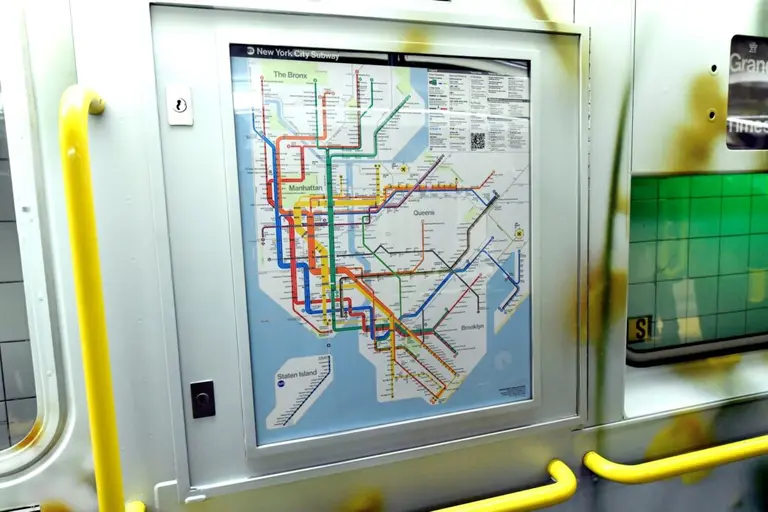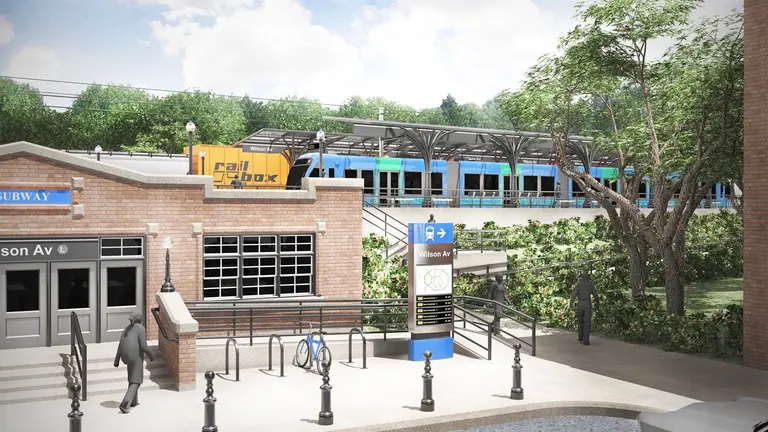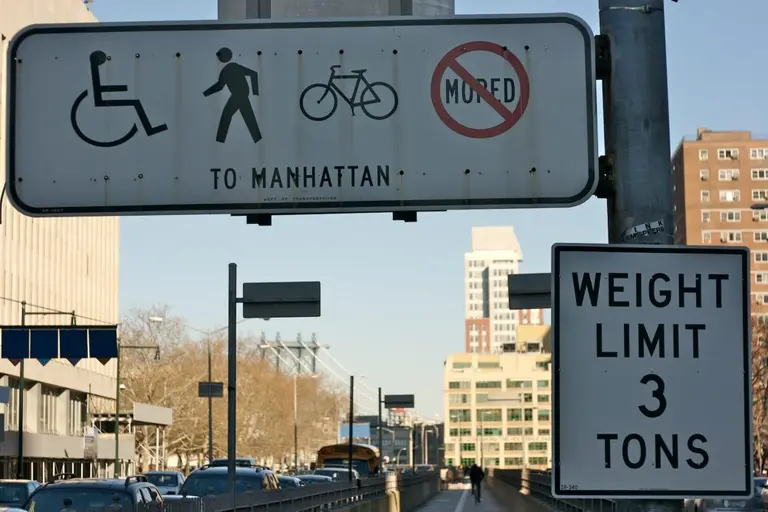The world’s first streetcar began operation in Lower Manhattan in 1832
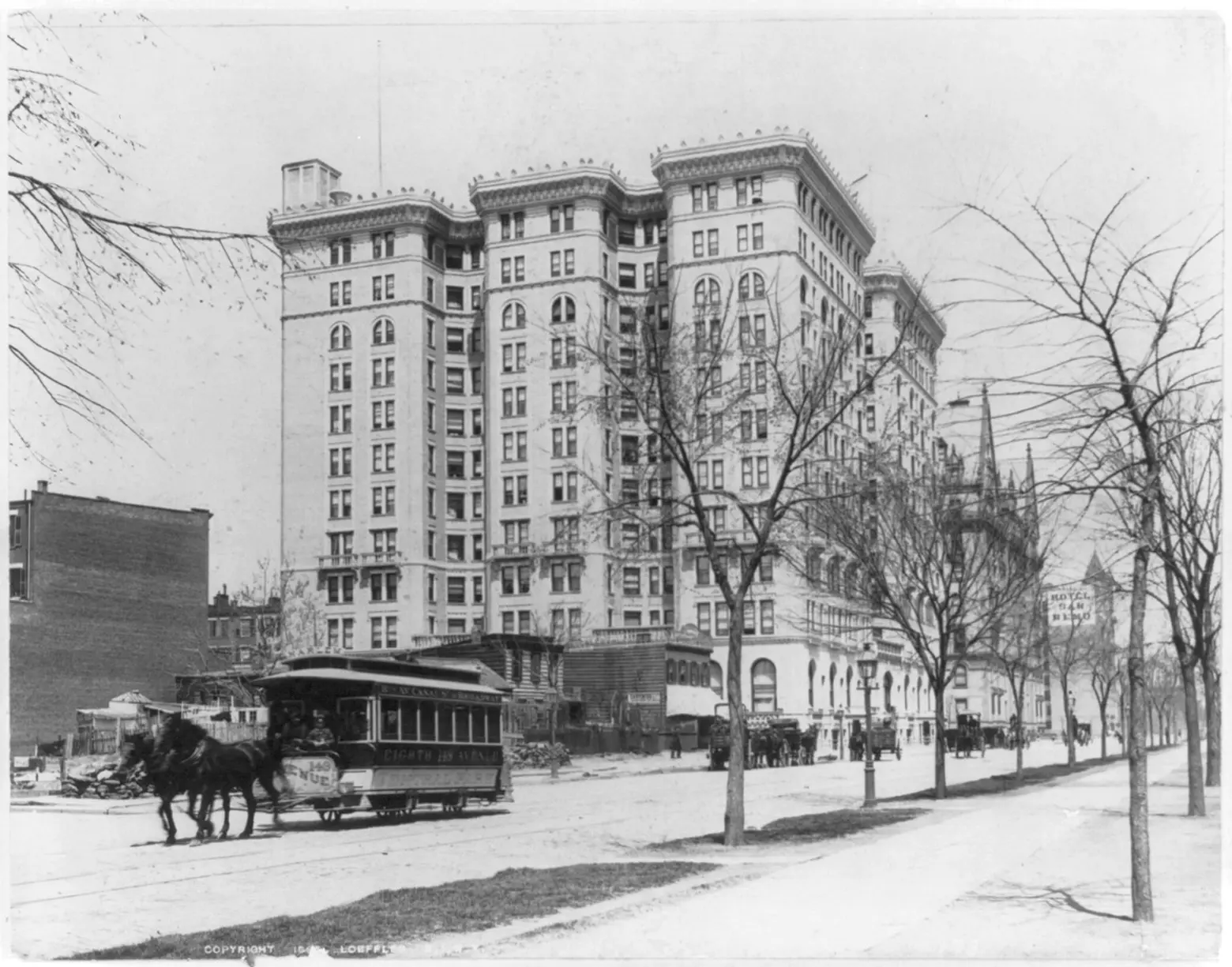
Horse-drawn streetcar no. 148 of a New York City system. Photo courtesy of the Library of Congress
On November 14, 1832, the John Mason, a horse-drawn streetcar, began its route between Prince and 14th Streets. Named for the railroad magnate who commissioned it, the new transportation addition was the first of its kind and a vast improvement over the horse-drawn omnibus that was currently in use. Built in 1827, the omnibus was little more than a boxy stagecoach, with riders packed into it like “sardines in a box with perspiration for oil. Passengers hang from the straps like smoked hams in a corner grocery.” Fares were only 15 cents, and though cars were only supposed to hold 15 people, riders even clambered onto the roof, holding on for dear life.
Wealthy banker and major city landowner John Mason had seen something similar to the streetcar in a French drawing, and he commissioned John Stephenson, a young Irish immigrant, to build one in 1832. The new car was basically an omnibus on rails that were laid in the street; it happened that Mason had just been granted a charter for the New York and Harlem Railroad.
Stephenson modeled the new streetcars after railroad cars, but he placed their seats above the wheels and floors in between the wheels so that they would be easily accessible from the street. Stephenson secured a patent for the new design the following year. Soon requests poured in from all over the country.
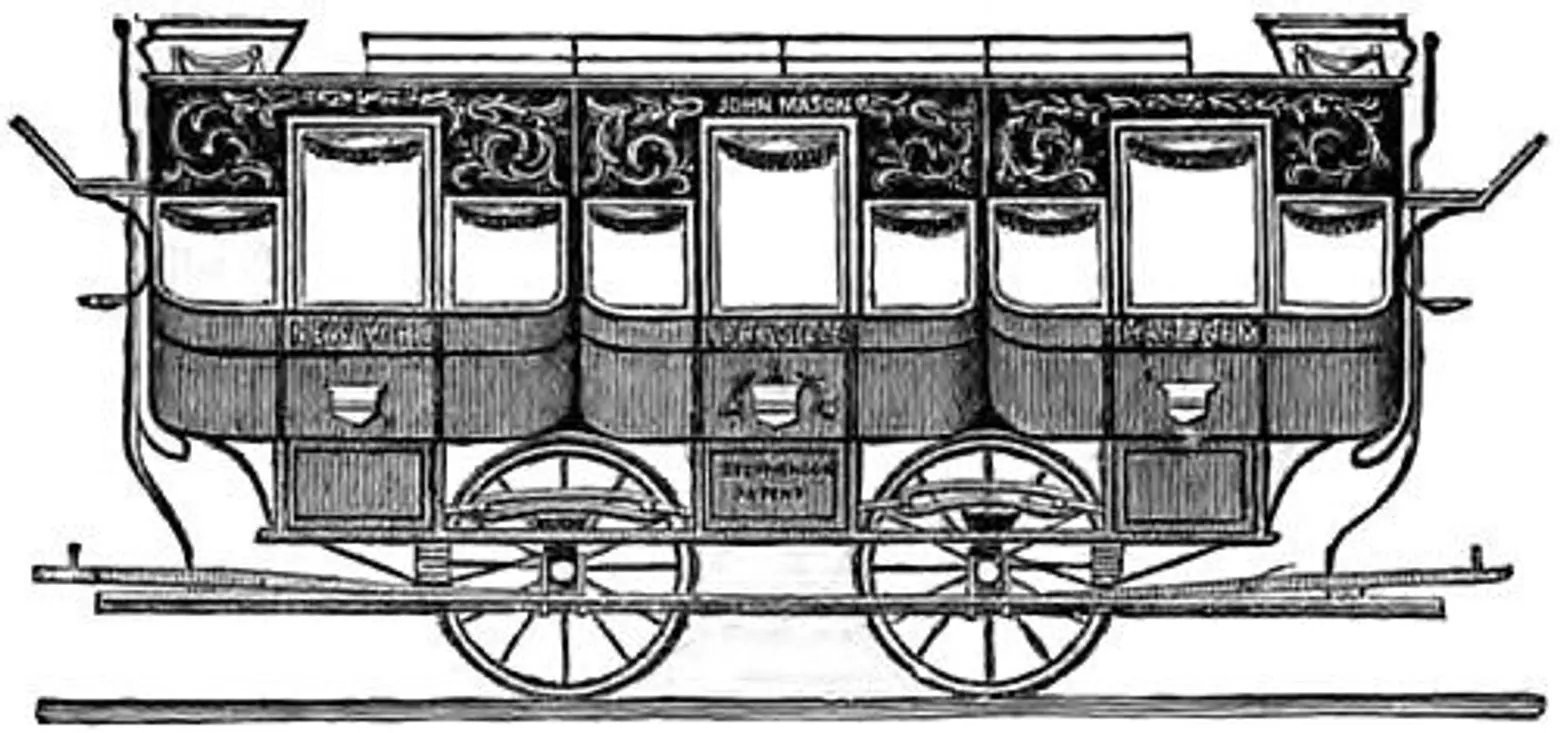
Compared to the omnibus, the new streetcars were the height of luxury, with three separate large compartments with their own entrances, beautifully upholstered seats, and glass windows. The streetcar’s wheels ran along steel rails, so it was easier to pull. This meant more comfort for passengers, almost twice the speed (6-8 miles per hour), and fewer horses. Because it was more efficient the new invention only cost 10 cents compared with 15 cents for the omnibus.
A driver sat in front, and a conductor helped passengers board, collected fares, and rang a bell to signal the driver when to stop and go. By 1870 New Yorkers had racked up 100 million trips a year in the horse-drawn streetcars, which, of course, means a lot of horse-you-know-what: The city’s 150,000 horses each generated 22 pounds of manure daily, leaving the city “carpeted with a warm, brown matting of comminuted horse dropping, smelling to heaven and destined in no inconsiderable part to be scattered in fine dust in all directions, laden with countless millions of disease breeding germs.”
It was feared that manure would pile up until it reached the third story of the city’s buildings. Fortunately, autos replaced horses within decades–by 1917 horse-drawn streetcars had ceased to operate in New York City–replacing reeking manure with poisonous smog.
RELATED:
- How Horse Poop Inspired the New York City Stoop
- Manure Heaps, Fat Melting, and Offensive Privies: Mapping NYC’s 19th Century Nuisances
Editor’s note: The original version of this story was published in 2016 and has since been updated.

